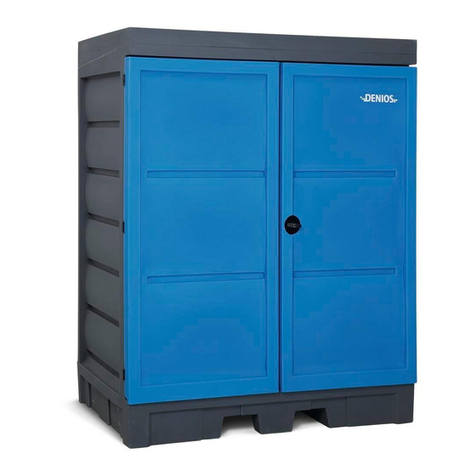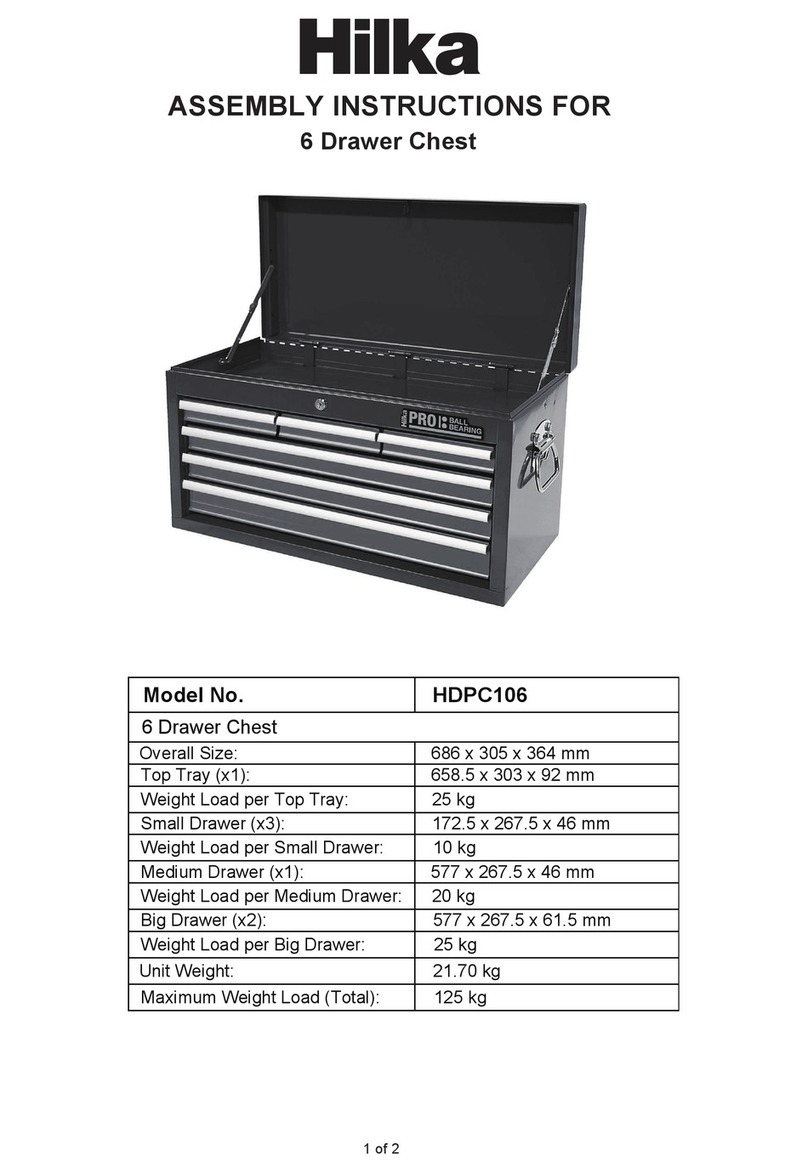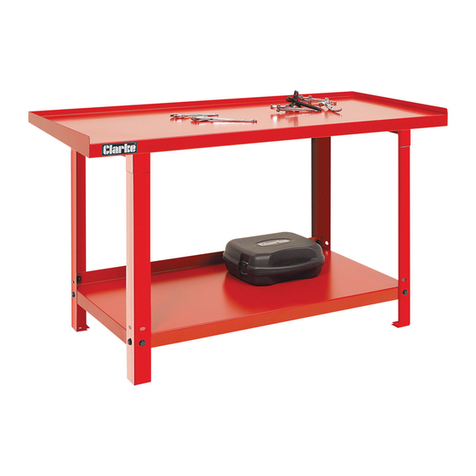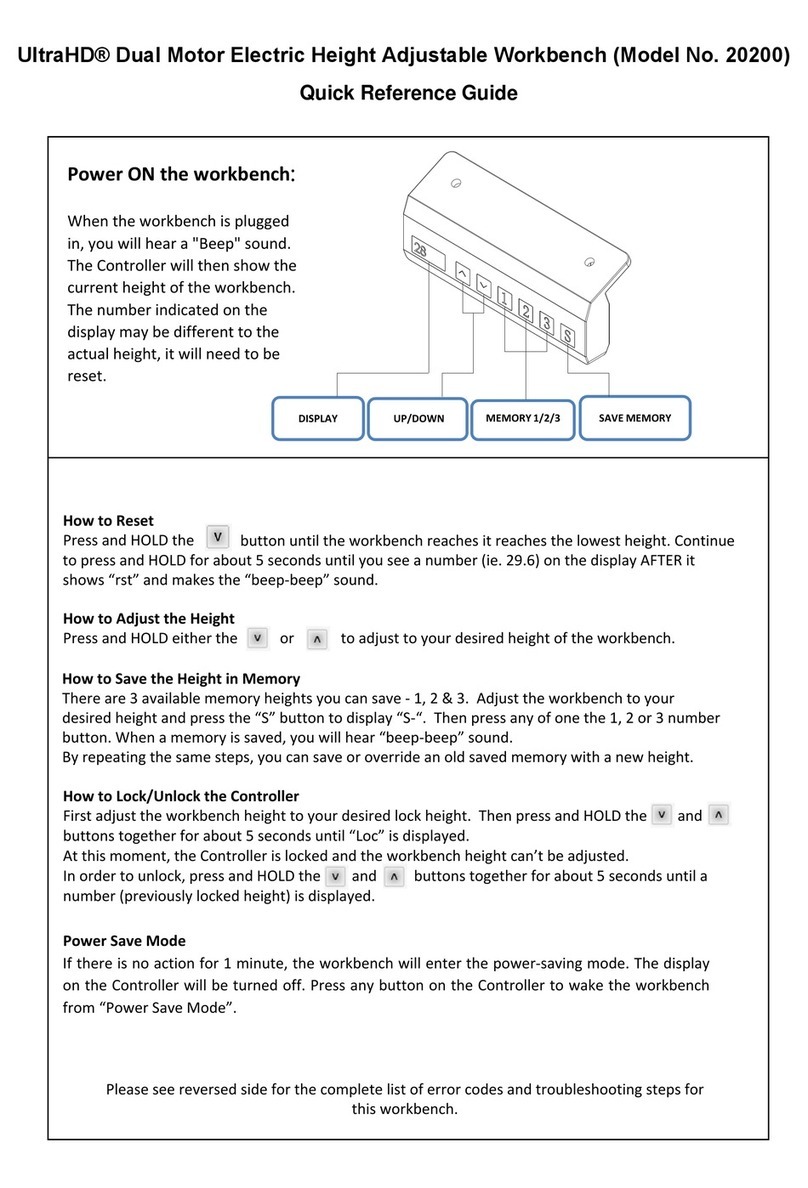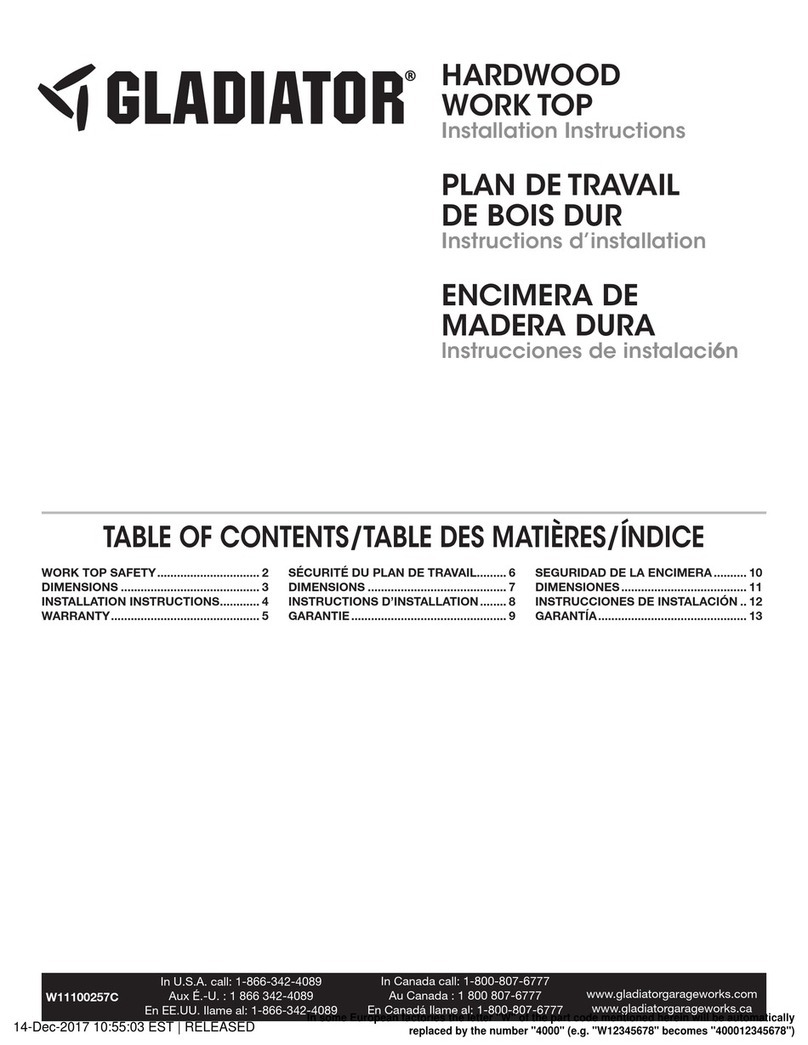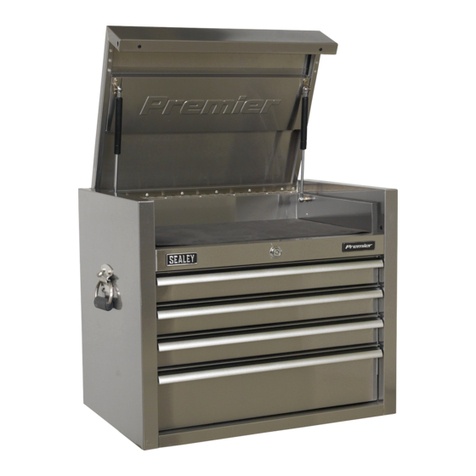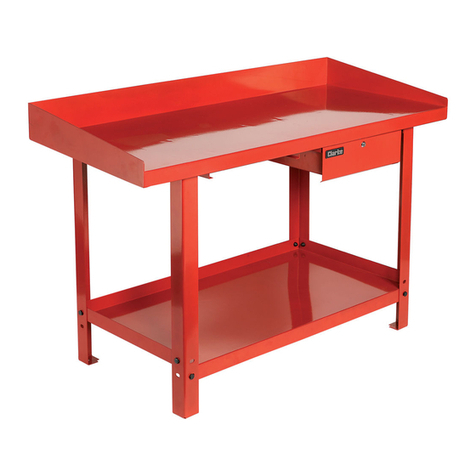Denios 2 P2-S User manual

Gefahrstoff – Depot und Gefahrstoffstation
HazMat-Depos and HazMat Station
Box Multi-Risques et Station Multi-Risque
Depósito de Sustancias peligrosas y Estación de Sustancias peligrosas
Skład i stacja substancji niebezpiecznych
DENIOS AG
Dehmer Straße 58-66
D-32549 Bad Oeynhausen
Tel.: +49 (0)5731 7 53 - 122
Fax: +49 (0)5731 7 53 - 95 951
E-Mail: customerservice@denios.de
Ihren lokalen Ansprechpartner finden Sie auf unserer Internetseite www.denios.com
You`ll find your local partner on our InterNet side www.denios.com
Vous trouverez le nom de votre interlocuteur sur notre site internet www.denios.com
En nuestra página web encontrará usted la persona de contacto correspondiente www.denios.com
Na stronie internetowej www.denios.com znajdąPaństwo lokalnego przedstawiciela naszej firmy.
04/2010
121750_BA_INT 004
4 GST-KS
2 P2-S
4 P2-H

Gefahrstoffstation -depot Seite 2 von 8 Seiten Ausgabe 04/2010
d
Pos. Deutsch English Français Español Polski
1 Gitterroste ganze
Fläche Full width grid Caillebotis Surface
pleine
Rejilla de ancho
completo
Kraty
pełnopowierzchniowe
2 Gitterroste
halbe Fläche
Half width grid
shelf
Caillebotis demi-
surface
Rejilla de mitad de
ancho
Kraty
półpowierzchni
3
Regaltraverse im
Raster
verstellbar
Adjustable shelf
arms
Traverses de
rayonnage régla-
bles
Travesaño regulable Trawersa regału w
siatce, regulowana
4 Fassauflage Drum support Support pour fût Soporte para bidón Nakładka na beczkę
5
Regalstütze ein-
gehängt und stu-
fenlos verstellbar
Shelf support
fitted and infin-
tely variable
Supports de
rayonnage sus-
pendus et régla-
bles en continu
Marco de estantería,
altura graduable
Słupek regału,
wieszany i
regulowany
bezstopniowo
g
f
e
c

Gefahrstoffstation -depot Seite 3 von 8 Seiten Ausgabe 04/2010
1. Allgemeine Hinweise
Die Allgemeine Betriebsanleitung für Lagersysteme, 103041, in der zurzeit gültigen Fassung ist zu beachten.
Die nationalen Vorschriften und Sicherheitsbestimmungen sind zu beachten.
2. Spezielle Sicherheitshinweise
Bei der Lagerung von Flüssigkeiten mit einem Flammpunkt bis 55°C sind die Belange des Brand- und Explosi-
onsschutzes zu beachten!
3. Einsatz und Verwendungszweck
Das System dient zur Lagerung von gefahrgutrechtlich zugelassenen Transportbehältern wie Fässer oder
Kleingebinden. Je nach Ausführungsvariante dürfen wassergefährdende Stoffe oder brennbare Stoffe mit
einem Flammpunkt bis 55°C eingelagert werden. Die Depots können in Gebäuden und auf ausreichend
überdachten Stellplätzen im Freien aufgestellt werden. Die Versionen 1/2/4P2-G, 2/4P2-S, 2/4P2-H,
2/4GST-KA, 2/4GST-KS, FS8.8, FS8.16, FSB8.16, ECO-D2, ECO D3 dürfen auch ohne Überdachung auf-
gestellt werden.
Je nach Ausführung ist die natürliche Belüftung der Systeme für eine passive und aktive Lagerung ausrei-
chend. Im Innenbereich ist ggf. für eine ausreichende Belüftung der Räume zu sorgen.
Eine stehende und liegende Lagerung von 60 und 200 Liter Fässern auf Fassböcken ist möglich.
Nur Stoffe einlagern, gegen die der Werkstoff der Auffangwanne beständig ist. Siehe Allgemeine Be-
triebsanleitung.
4. Technische Beschreibung
Ausführung
Die Gefahrstoffstation besteht aus einer geschweißten Stahlkonstruktion mit integrierter Auffangwanne und
besitzt eine allgemeine bauaufsichtliche Zulassung des DiBt unter der Nr. Z-38.5-96.
5. Aufbau
•Lagersystem ebenerdig aufstellen.
•Um das Beschicken, Lagern und Abfüllen der Auffangwanne zu erleichtern, sollte das optional lieferbare
DENIOS AG Zubehör eingesetzt werden.
6. Technische Daten
Die produktspezifischen technischen Daten wie Auffangvolumen, maximale Traglast etc. sind dem Typenschild
zu entnehmen und zwingend einzuhalten.
7. Betrieb
Nach Öffnen des Deckels / Sicherheitsbügels (optional) können die Fässer mit geeigneten Hilfsmitteln in die
Gefahrstoffstation eingelagert werden. Den Deckel / Sicherheitsbügel (optional) wieder verschließen.
Bei den Typen 4 GST-KC und 4 GST-KS muss vor Schließen des Deckels die Arretierung der linken
Gasfeder gelöst werden.
Fässer auf sicheren Stand kontrollieren und gegen um- bzw. herabstürzen sichern!
Liegende Fasslagerung nur auf Fassböcken!
Abfüllvorgänge nur über der Auffangwanne durchführen so dass Leckagen sicher zurück gehalten wer-
den.
8. Wartung und Instandhaltung
Die Prüfung und Wartung ist entsprechend den Anweisungen der allgemeinen Betriebsanleitung, die
in der Anlage beiliegt, einzuhalten und durchzuführen.
Bei Austausch von Teilen sind nur Originalersatzteile des Herstellers zu verwenden!
Deutsch

Gefahrstoffstation -depot Seite 4 von 8 Seiten Ausgabe 04/2010
1. General Instructions
The general instructions for storage systems, material no. 103041, in the current version, must be observed.
National standards and safety regulations must be observed.
2. Special Instructions
Area of the grating must remain free as shown on the type label.
3. Use and intended purpose
The sump/storage system is used to enable drums of up to 200 litres capacity and cans and other small con-
tainers to be stored safely. 60 and 200 litre drums can be stored upright or on their side on drum mounts.
Only store substances to which the material of the sump is resistant. See the General Operating
Instructions.
Where hazardous materials of classes R10, R11 and R12 are being stored, 25% of the overall
area (of the grids) must be left unoccupied.
The sumps are approved for the storage of materials in hazard classes WGK 1-3 and flammable liquids with a
flash point > 55 °C.
4. Technical details
Design
The HazMat station is manufactured from steel, with an integrated sump and is compliant with European build-
ing regulations. The sump capacity is 205 litres.
5. Assembly
•Place the storage system on level ground.
•The accessories facilitate loading, storage and dispensing from the sump.
6. Specifications
See type label.
7. Operation
After opening the lid / safety bracket (optional) the drums can be placed in the hazardous material station using
suitable equipment. Close lid / safety bracket (optional).
For types 4 GST-K and 4 GST-KS before closing the lid the blocking device of the left gas spring
must be released.
When storing combustible fluids comply with the fire and explosion protection regulations!
For hazard classes R10, R11 and R12 the free areas of 25% of the total area (gratings) must be ad-
hered to. (Exception: GST-KS and Depot AI)
Check drums are positioned safely and secure to prevent falling over or down!
Only store drums horizontally on drum stands!
Safe filling is possible over the collecting sump.
Access to the hazardous materials station by unauthorised persons is prohibited!
8. Maintenance and Servicing
The inspection and maintenance of the storage system/sump must be carried out in accordance with
the directions in the general operating instructions enclosed in the annex. When replacing parts only
the manufacturer’s original parts may be used.
En
g
lish

Gefahrstoffstation -depot Seite 5 von 8 Seiten Ausgabe 04/2010
1. Indications générales
La notice d’utilisation générale pour le système de stockage 103041 doit être considérée dans sa version ac-
tuelle. Respecter les normes et les prescriptions de sécurité en vigueur localement.
2. Indications de sécurité spécifiques
Lors du stockage, les espaces libres doivent être respectés conformément à la fiche signalétique.
3. Usage et emploi
Le bac de rétention / système de stockage sert au stockage sécurisé de fûts d’au plus 200 litres et de petits
récipients. Le stockage horizontal et vertical de fûts de 60 et 200 litres sur les supports de fût est possible.
Ne stocker que des matières contre lesquelles le matériau du bac de rétention est résistant. Se
reporter au manuel d’utilisation général.
Pour des matières dangereuses de classe R10, R11 et R12, 25 % de la surface totale doit res-
tée libre.
Les bacs de rétention sont autorisés pour le stockage de matières selon WGK 1-3 et de matières inflammables
avec un point d’inflammation > 55 °C.
4. Description technique
Modèle
Le Box Multi-Risques se compose d'une structure métallique soudée équipée d’un bac de rétention intégré. Il
bénéficie de l’homologation Nr. Z-38.5-96. Le volume de rétention du bac est de 205 litres.
5. Montage
•Disposer le système de stockage de plain pied au sol.
•Pour faciliter le chargement, le stockage et le soutirage bac de rétention, les accessoires DENIOS (en
option) devraient être utilisé.
6. Données techniques
Voir la fiche signalétique
7. Fonctionnement
Les fûts peuvent être stockés dans le box multi-risques avec les outils adaptés après ouverture du couvercle /
de la bride de sécurité (en option). Refermer le couvercle / la bride de sécurité (en option).
Pour les modèles 4 GST-KC et 4 GST-KS, le blocage du vérin gauche doit être enlevé avant la
fermeture du couvercle.
Respecter les protections contre le risque incendie et les risques d’explosions en cas de stockage de
liquides inflammables!
Pour les produits dangereux des classes R10, R11 et R12, 25 % de la surface totale (caillebotis) doit
être dégagée (exception: GST-KS et Dépôt AI)
Vérifier la stabilité des fûts et les sécuriser contre le basculement!
N’entreposer les fûts à plat que sur les supports de fûts
Soutirage sécurisé au-dessus du bac de rétention possible
L’accès au box multi-risques est interdit aux personnes non autorisées!
8. Maintenance et entretien
Le contrôle et la maintenance sont à effectuer selon les consignes du guide d’utilisation général situé
dans la station.
N’utiliser que des pièces de rechange d’origine du fabricant lors du remplacement de pièces!
Français

Gefahrstoffstation -depot Seite 6 von 8 Seiten Ausgabe 04/2010
1. Aviso general
Han de tenerse en cuenta las instrucciones de uso para el sistema de almacenamiento, 103041, que estén
actualmente en vigor. Deben observarse las normativas y disposiciones de seguridad nacionales.
2. Indicaciones especiales de seguridad
Durante el almacenaje habrán de respetarse las superficies libres según las placas de identificación.
3. Empleo y finalidad
El cubeto de retención / el sistema de almacenamiento sirve para almacenar de forma segura bidones de
hasta 200 litros y pequeños recipietes. También es posible almacenar bidones de 60 y 200 litros en posición
horizontal o vertical sobre un caballete.
Almacenar únicamante las sustancias a las que el cubeto es resistente. Ver las instrucciones
generales de uso.
Si se almacenan sustancias peligrosas de las clases R10, R11 y R12 se ha de dejar libre el 25
% de la superficie total
Los cubetos de retención están homologados para almacenar sustancias según WGK 1-3 y líquidos
inflamables con un punto de inflmación > 55 °C.
4. Descripción tecnica
Modelo
La estación de sustancias peligrosas está hecha de una construcción de acero soldado con un cubeto
integrado y tiene homologación general de construcción con el número Z-38.5-96. El volumen de retención es
de 205 litros.
5. Montaje
•Colocar el sistema de almacenamiento sobre el suelo
•Para facilitar la carga, el almacenamiento y el llenado del cubeto de retención, debería utilizarse el
accesorio opcional DENIOS AG
6. Datos técnicos
Ver placa de identificación.
7. Funzionamiento
Una vez abierta la tapa o dispositivo de seguridad, se pueden almacenar los bidones en la estación utilizando
los medios de manipulación adecuados. Volver a cerrar la tapa / dispositivo de seguridad.
En los tipos 4 GST-KC y 4 GST-KS, hay que liberar la retención del muelle neumático izquierdo
antes de cerrar la tapa.
¡Tener en cuenta la protección contra explosiones e incendios si se almacenan líquidos inflamables!
Si se almacenan sustancias peligrosas de las clases de peligro R10, R11 y R12, se ha de dejar libre el
25 % de la superficie total de la rejilla. (Excepción: GST-KS y Depósito AI)
¡Controlar el estado de los bidones y asegurarlos contra vuelcos y caídas!
¡Colocar los bidones en posición horizontal sólo sobre soportes para bidones!
Llenado seguro gracias al cubeto de retención.
El acceso a la estación de sustancias peligrosas está prohibido a personas no autorizadas.
8. Mantenimento y conservación
Las pruebas y mantenimiento han de realizarse según las indicaciones de las Instrucciones
generales de uso, adjuntas en el anexo.
¡Si cambia alguna pieza, utilice sólo respuestos originales del fabricante!
Español

Gefahrstoffstation -depot Seite 7 von 8 Seiten Ausgabe 04/2010
1. Wskazówki ogólne
Należy przestrzegaćogólnej instrukcji obsługi systemów magazynowania, 103041, w obowiązującej aktualnie
wersji. Należy przestrzegaćlokalnych przepisów oraz instrukcji BHP.
2. Specjalne wskazówki bezpieczeństwa
W przypadku magazynowania należy przestrzegaćwolnych powierzchni zgodnie z tabliczkąznamionową.
3. Zastosowanie i przeznaczenie
Wanna wychwytowa / system magazynowania służy do bezpiecznego składowania beczek o pojemności do
200 l oraz małych pojemników. Możliwe składowanie beczek o pojemności 60 i 200 l na stojąco i leżąco ze
stojakami pod beczki.
Należy przechowywaćwyłącznie substancje, na które odporna jest wanna wychwytowa. Patrz
ogólna instrukcja obsługi.
W przypadku klas substancji niebezpiecznych R10, R11 i R12 25% powierzchni całkowitej musi
pozostaćwolne.
W wannach wychwytowych jest dozwolone magazynowania substancji zgodnych z WGK 1-3
(Wassergefährdungsklasse – niemiecka klasa dla wody) oraz cieczy palnych o temp. zapłonu > 55°C.
4. Opis techniczny
Wersja
Stacja substancji niebezpiecznych składa sięze spawanej konstrukcji stalowej ze zintegrowanąwanną
wychwytowąi jest dopuszczona przez nadzór budowlany pod numerem Z-38.5-96. Pojemność wanny wynosi
205 litrów.
5. Montaż
•Ustawićsystem magazynowy na równej płaszczyźnie.
•W celu ułatwienia napełniania, magazynowania i opróżniania wanny wychwytowej, należy zastosować
dostępne opcjonalnie akcesoria firmy DENIOS AG.
6. Dane techniczne
Patrz tabliczka znamionowa
7. Eksploatacja
Po zdjęciu pokrywy / uchwytu zabezpieczającego (opcjonalnie) beczki mogązostaćumieszczone za pomocą
odpowiednich przyrządów w stacji substancji niebezpiecznych. Zamknąć pokrywę/ uchwyt zabezpieczający
(opcjonalnie).
W przypadku typów 4 GST-KC i 4 GST-KS przed zamknięciem pokrywy należy zwolnićblokadęlewego
gazowego elementu sprężystego.
W przypadku składowania cieczy palnych należy przestrzegaćzasad przeciwpożarowych i ochrony
przed wybuchem!
W przypadku klas substancji niebezpiecznych R10, R11 i R12 25% powierzchni całkowitej (kraty) musi
pozostaćwolne. (Wyjątek: GST-KS i skład AI)
Sprawdzićstabilne ustawienie beczek i zabezpieczyćprzed przewróceniem sięlub wypadnięciem!
Przechowywanie beczek w pozycji leżącej wyłącznie na stojakach.
Możliwość bezpiecznego nalewania nad wannąwychwytową.
Zabrania siędostępu osób nieupoważnionych do stacji materiałów niebezpiecznych!
8. Konserwacja i utrzymanie w dobrym stanie
Należy przestrzegaći przeprowadzaćkontrole i konserwacje zgodnie z zaleceniami ogólnej instrukcji
obsługi dołączonej do urządzenia.
W przypadku wymiany części należy używaćwyłącznie oryginalnych części zamiennych producenta!
Polski

Gefahrstoffstation -depot Seite 8 von 8 Seiten Ausgabe 04/2010
This manual suits for next models
2
Table of contents
Languages:
Other Denios Tools Storage manuals
Popular Tools Storage manuals by other brands
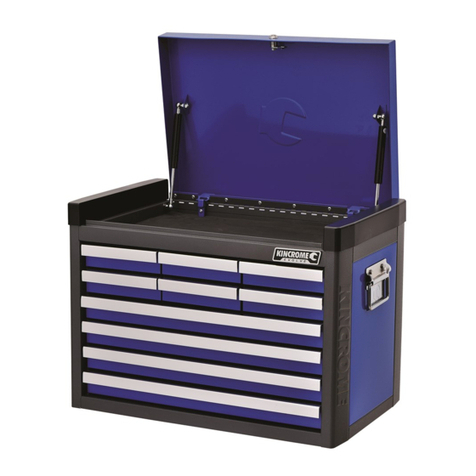
kincrome
kincrome Evolve K7611 Operation manual
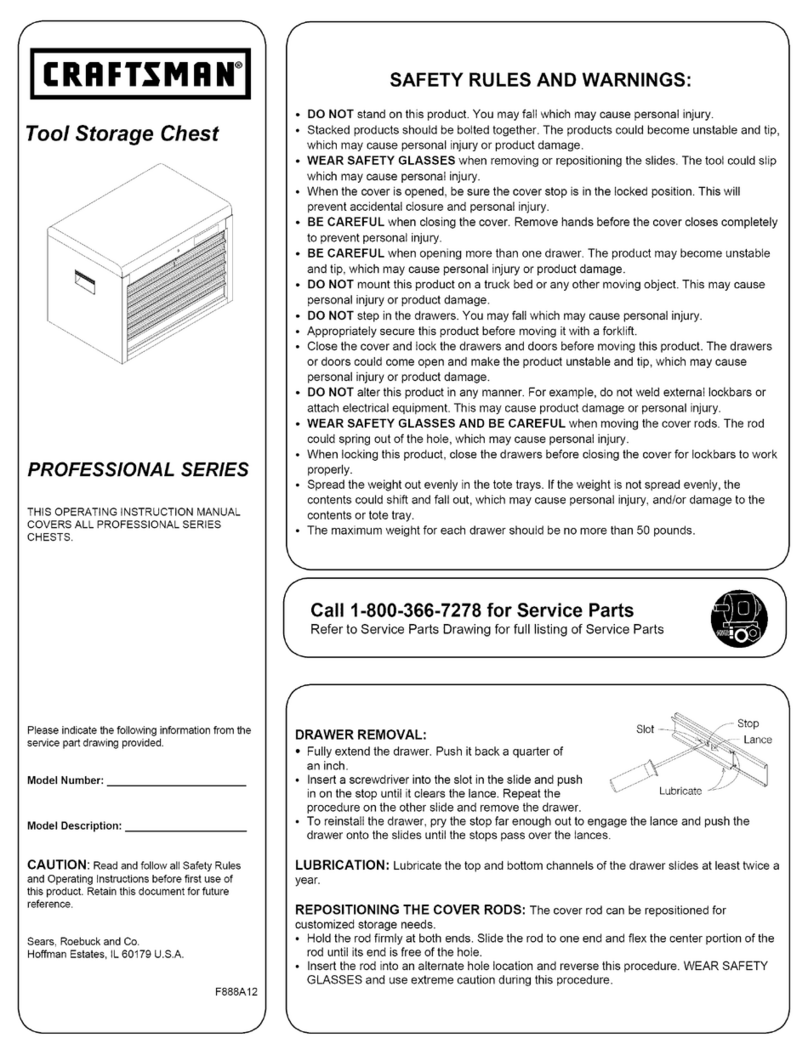
Craftsman
Craftsman PROFESSIONAL SERIES Operating instructions manual
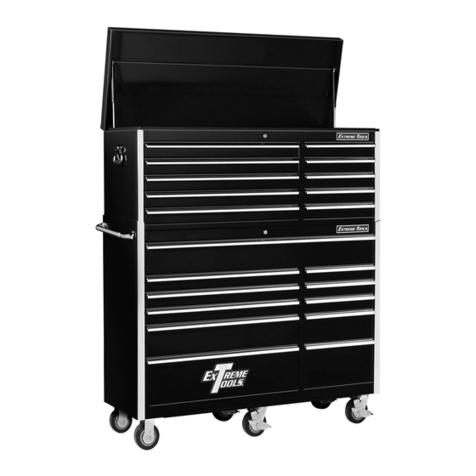
Extreme Tools
Extreme Tools EX5610CHBK manual
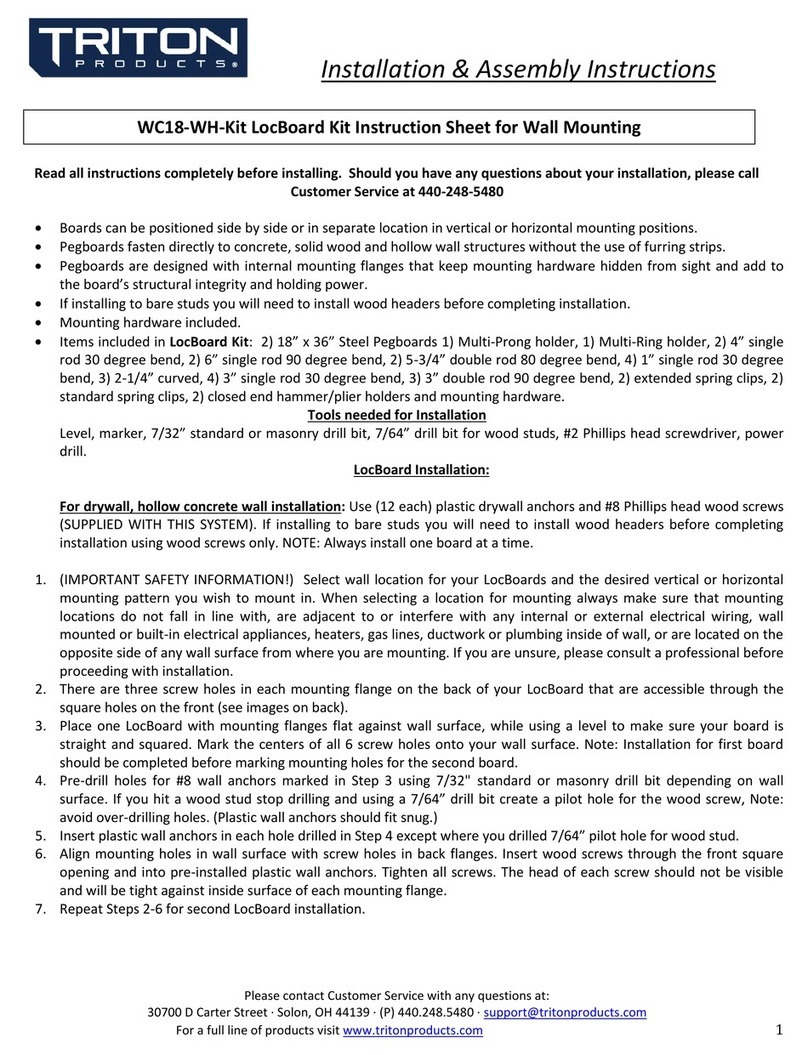
Triton
Triton WC18-WH-Kit Installation & assembly instructions

Sears
Sears CRAFTSMAN F1725 Operator's manual

ExPelec
ExPelec Guil TM440S user manual
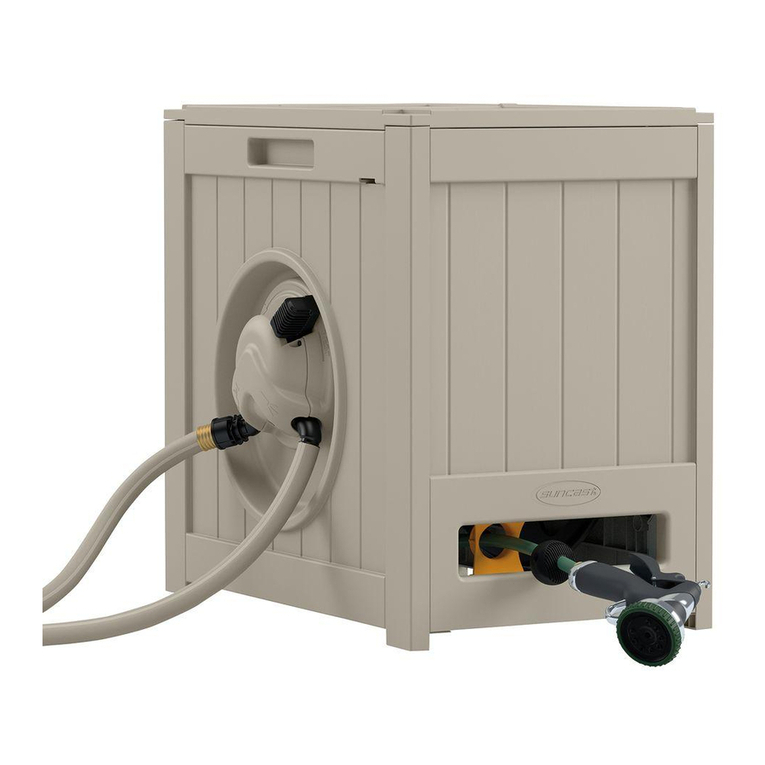
Suncast
Suncast Hydro Power Auto Rewind RSH125 owner's manual
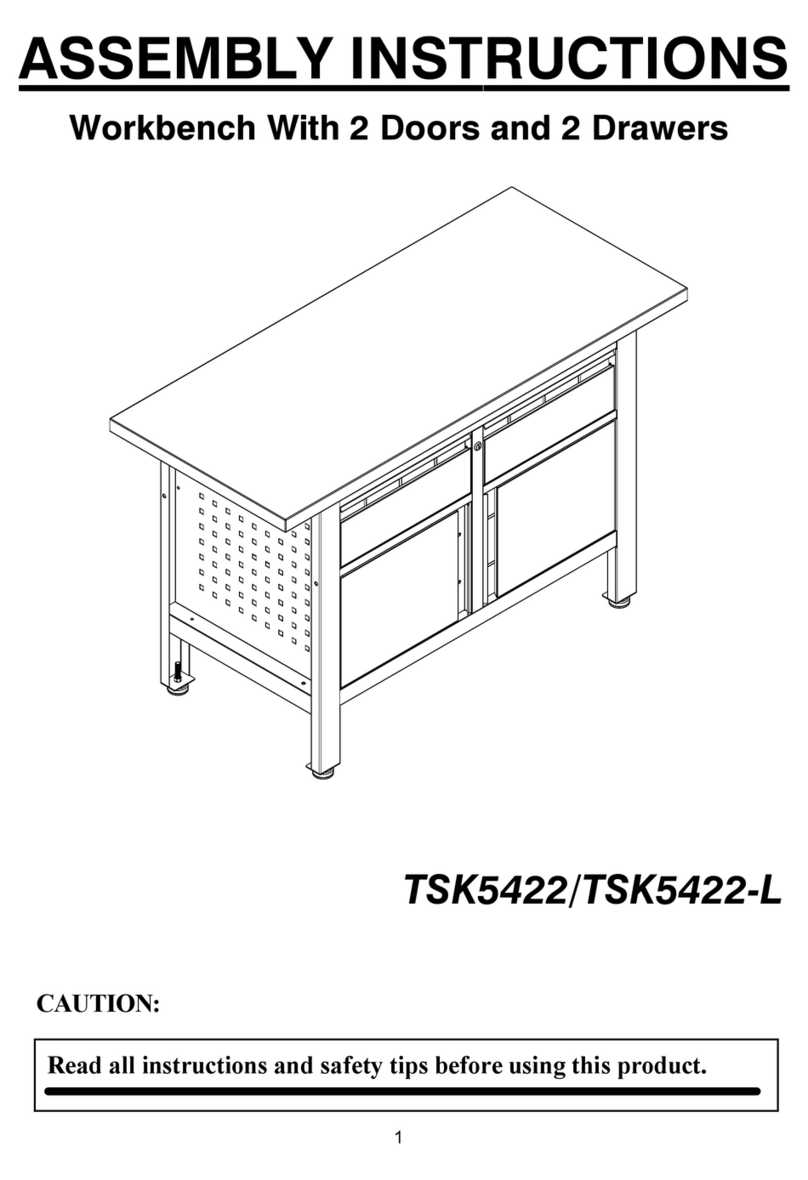
TOPMAQ
TOPMAQ TSK5422 Assembly instructions
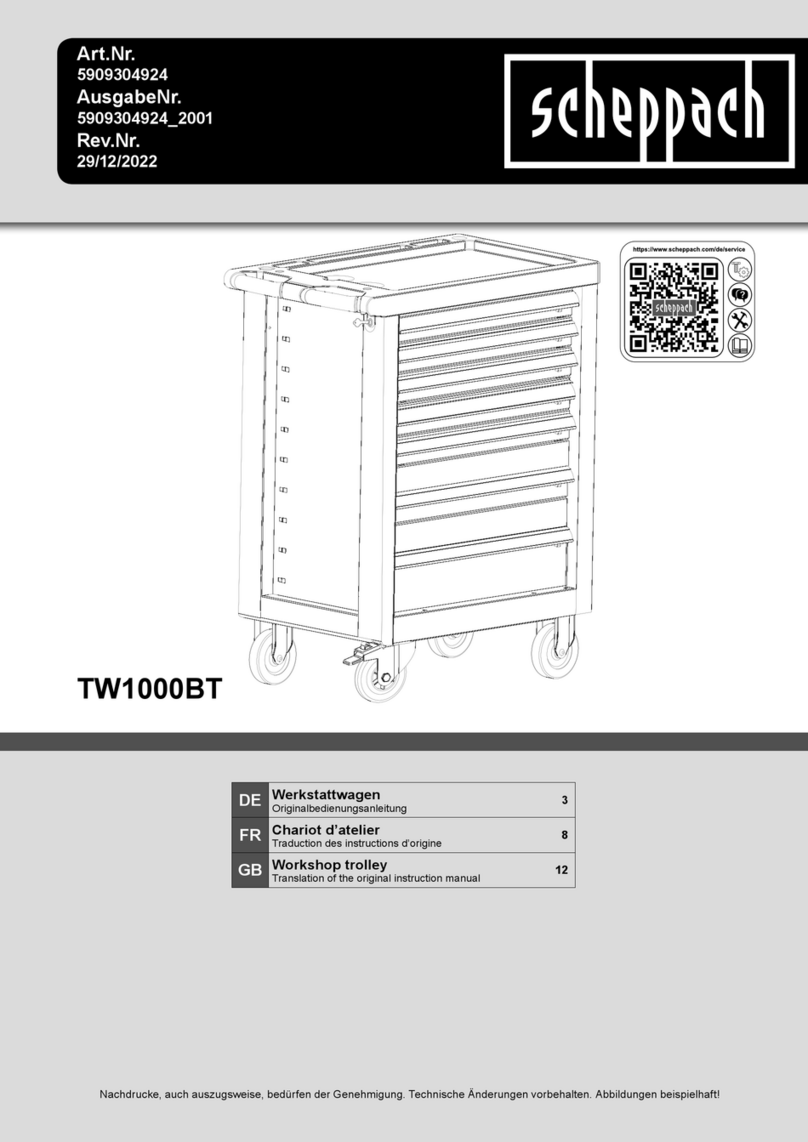
Scheppach
Scheppach TW1000BT Translation of the original instruction manual
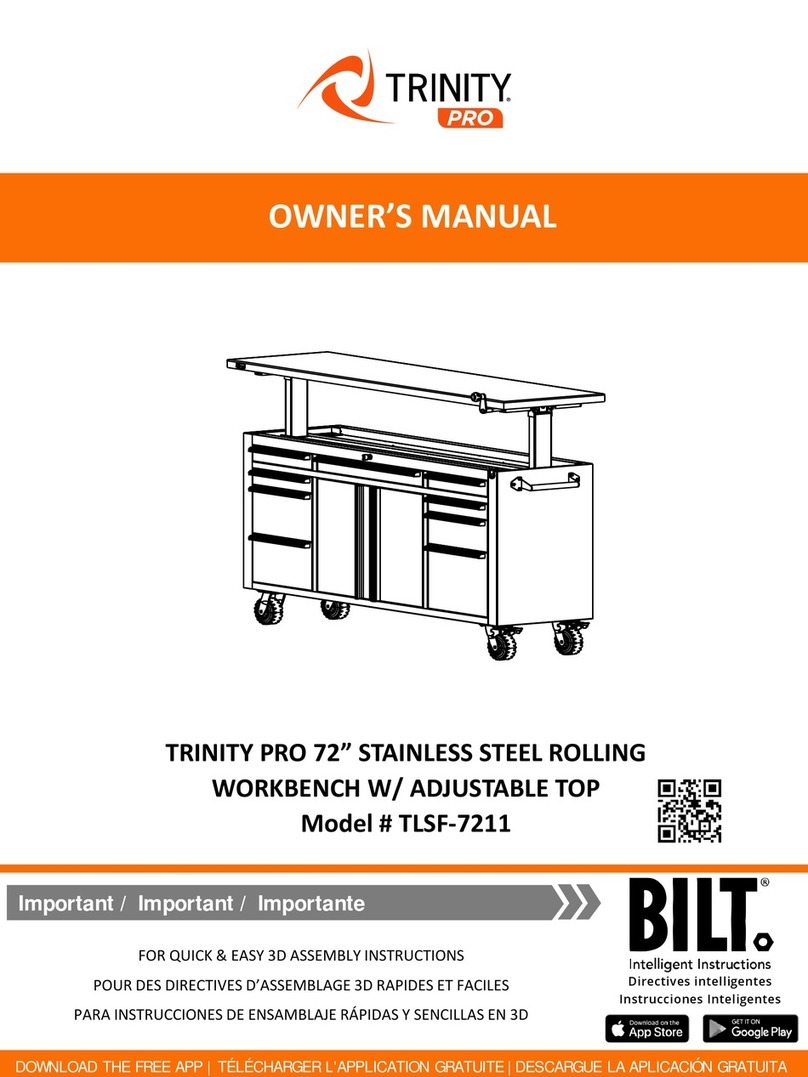
TRINITY Pro
TRINITY Pro TLSF-7211 owner's manual
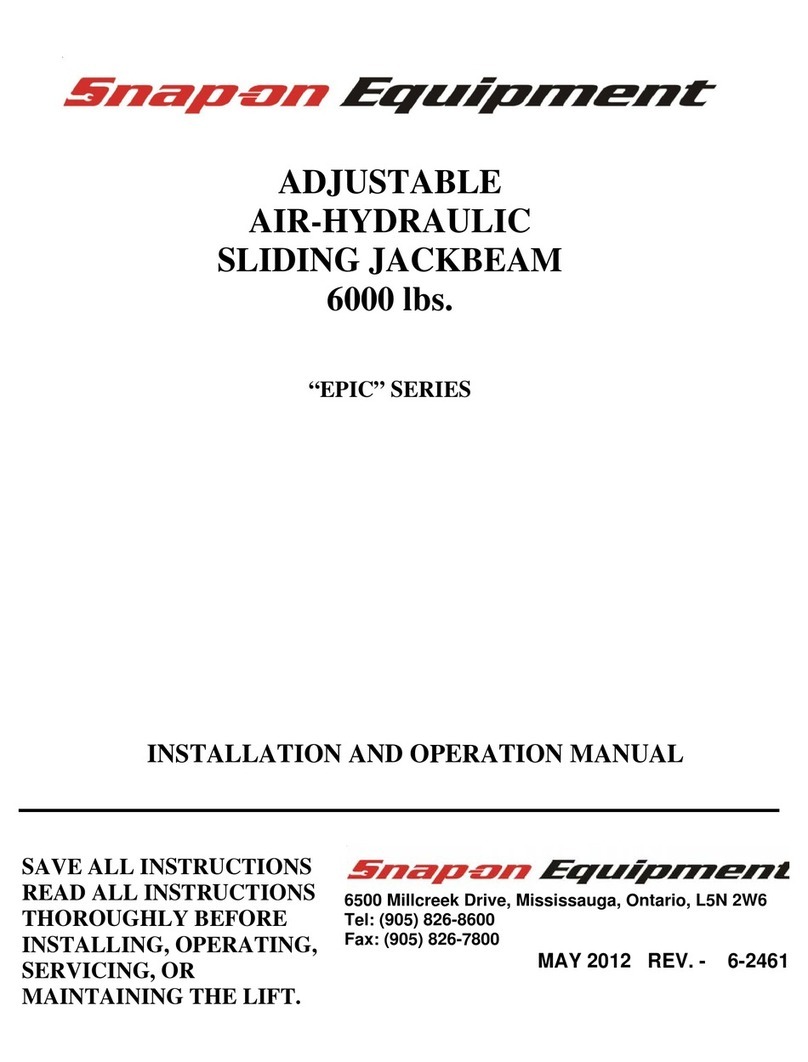
Snap-on Equipment
Snap-on Equipment Epic EELR132AJK Installation and operation manual
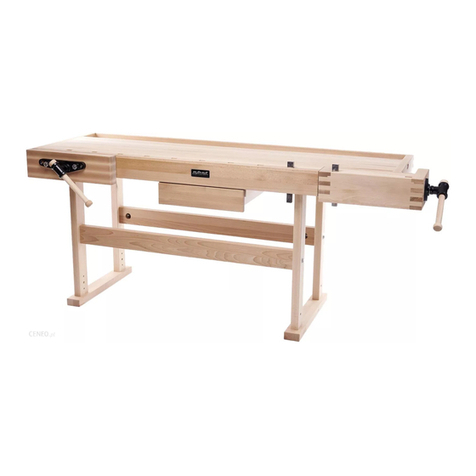
ramia
ramia PRO-A1 Assembly instructions
